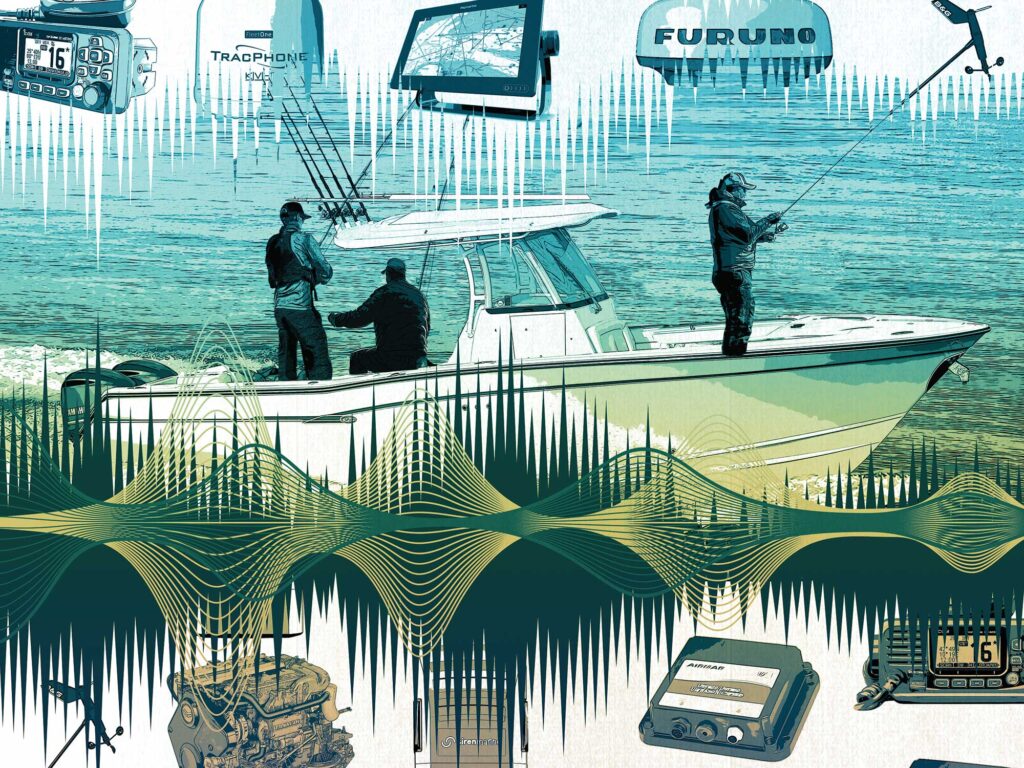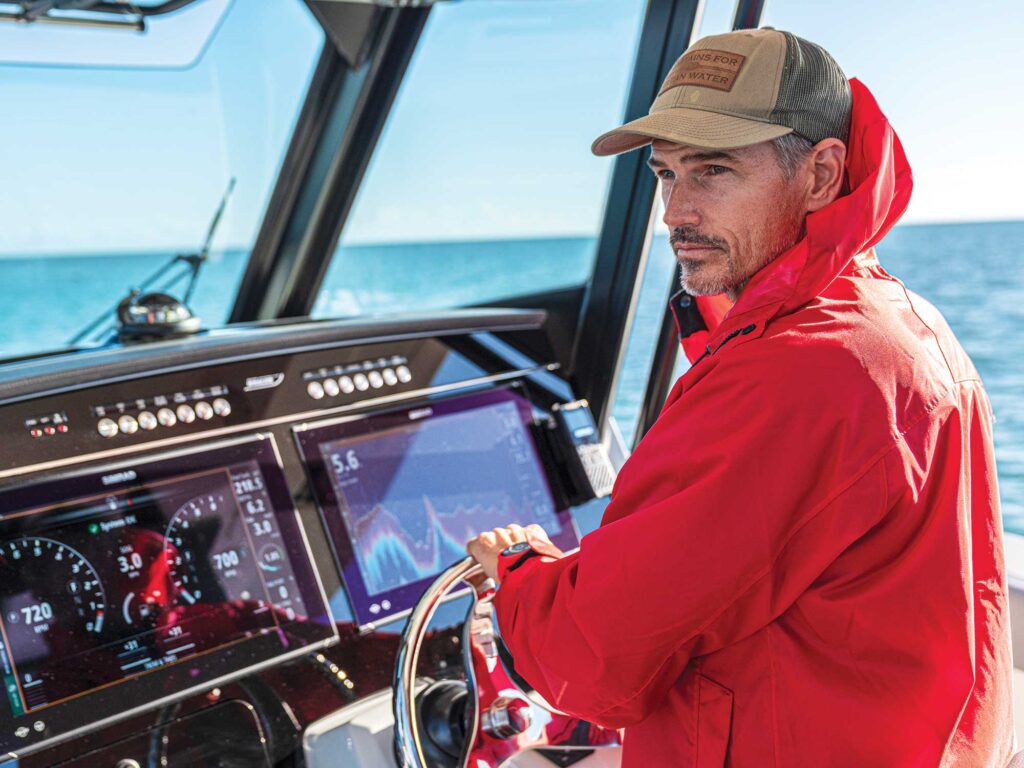
For years, NMEA 2000 has served as the proven and trusted digital “language” for networking marine electronics, as well as other onboard systems such as engines, pumps, air conditioning and more, tying them together for monitoring and control. Also known as N2K, NMEA 2000 was developed by National Marine Electronics Association (hence the acronym), which counts among its members all of the major marine electronics manufacturers and retailers.
Today, however, a new system has emerged from the NMEA. It’s called OneNet, and it’s even more robust and versatile than N2K. While it is not yet integrated into most marine electronics, that day will soon be here. When that occurs, what can boating anglers expect from OneNet?
Enter Ethernet
OneNet uses Ethernet—a type of high-speed LAN (Local Area Network) connection system—to create a network between devices, according to Mark Oslund, director of standards for the NMEA. It requires specific software integration within devices, which as mentioned earlier has not yet taken place on a wide-spread basis. Version 1.0 of OneNet was released in 2020 and is now available for licensing and purchase by marine electronics companies. The system will feature dedicated sensors and digital gateways using newly designated NMEA connectors, just as does the NMEA 2000 system.
Greater Bandwidth
One of the big advantages of OneNet communication channels lies in far greater bandwidth than N2K. This enables it to connect with more devices—as many as 60 per network—and carry large data payloads, such as radar, video and sonar data streams. OneNet also significantly boosts speeds—as much as 40,000 times faster than N2K, according to the NMEA. In addition, with OneNet, a single Power over Ethernet switch energizes all devices on the network, eliminating the need to power each unit individually, as is necessary with N2K networks.
N2K Complement
OneNet is designed to complement and expand—not necessarily replace—N2K and its predecessor NMEA 0183. Like creeks feeding into a main river, existing NMEA networks can feed into OneNet via special connectors and gateway devices.
“These serve to translate between protocols, allowing 2000 and 0183 to operate seamlessly in parallel with OneNet,” Oslund says. This reduces network upgrade costs, and eliminates the need to replace existing devices.
In the future, boating anglers can expect to see two types of OneNet products. For one, there will be marinized devices providing a watertight physical connection to a network (such as a sensor of some type). Secondly, boating anglers will see purpose-built software applications that can be installed in devices such as multifunction displays (MFD) or other pieces of marine electronics, according to Oslund. Some existing MFDs that currently support Ethernet might be upgradable via a software update to support OneNet in the future.
“The cool thing is that OneNet is open for innovation and the NMEA is prepared to offer manufacturers a choice to certify a physical device or an application that can be installed on a general-purpose device,” Oslund says. “Manufacturers who plan to leapfrog NMEA 2000 are poised to offer the flexibility of Ethernet with the data payload of NMEA 2000 data messages, as well as up and coming applications for radar, sonar, video cameras and more.”
Read Next: How to Get the Most Out of Your Electronic Charts

Common Language
Using Ethernet systems is not new. Major marine electronics have for years used Ethernet for radar and other devices that needed more communication bandwidth than is available via an N2K network. Furuno, for example, introduced its NavNet system Ethernet protocol in 2000. But the problem is that each marine electronics company tends to use a proprietary Ethernet system that does not allow for cross-communication between dissimilar brands of electronics.
For example, if you currently have a Garmin MFD, you are limited to using a Garmin radar or other system such as sonar. That’s not a bad thing, but perhaps you want to match a Garmin MFD with a Furuno radar. In this case, OneNet, like N2K, standardizes the networking language, software and physical connectors, enhancing a boater’s ability to build cross-brand marine electronics networks. However, again using the example above, this hinges on the assumption that both Garmin and Furuno both adopt the OneNet protocol (that has not yet occurred) to network devices from both brands.
What the Future Holds
Another advantage of OneNet is the ability to adapt to technologies that might emerge in years to come, capabilities that we might not even imagine right now. While no one can predict the future, Oslund points to the potential for streaming over-the-air data in real time from sources outside the boat on an MFD. “Imagine being able to stream in real time wireless signals from coastal radar installations or satellite imaging,” he says. “These kinds of future opportunities will be possible thanks to OneNet.”
While the future of OneNet possibilities looks bright, the road to industry acceptance might be a slow one. “Many manufacturers have come up with their own proprietary schemes because OneNet took so long,” says Eric Kunz, senior product manager for Furuno USA. “From a manufacturer’s point of view, there’s not much motivation to change right now.”
Such a move could actually hurt rather than enhance a brand’s competitive position, Kunz points out. “If we only sell a radar and not a matching MFD, we lose sales,” he explains.
At the same time, Kunz says that OneNet might be forced on manufacturers if, for instance, governments require marine electronics brands to adopt OneNet in order to bid for military or law enforcement contracts. “That would motivate many to switch to OneNet,” he admits.
When that occurs, boating anglers will most certainly reap the benefits.









